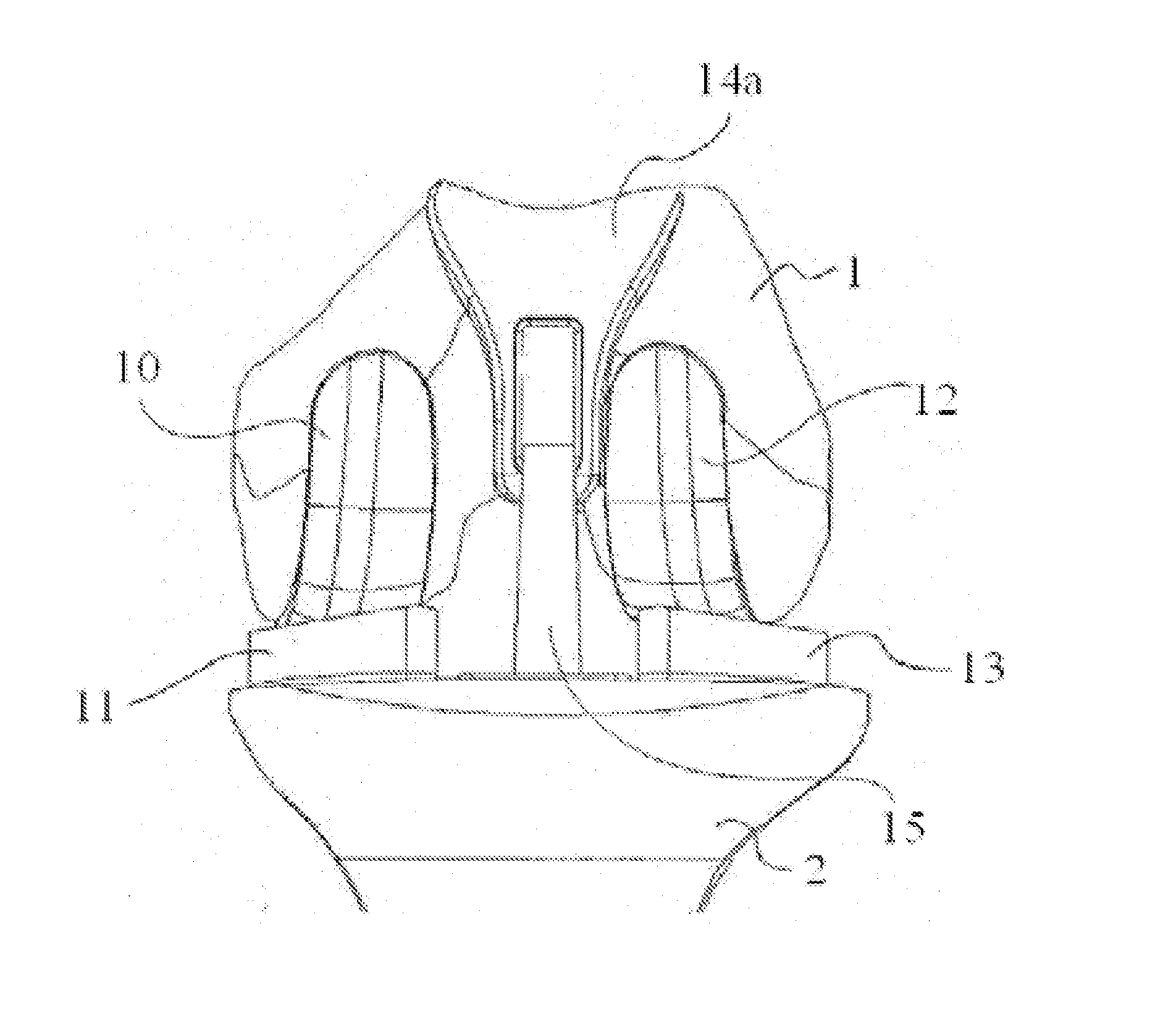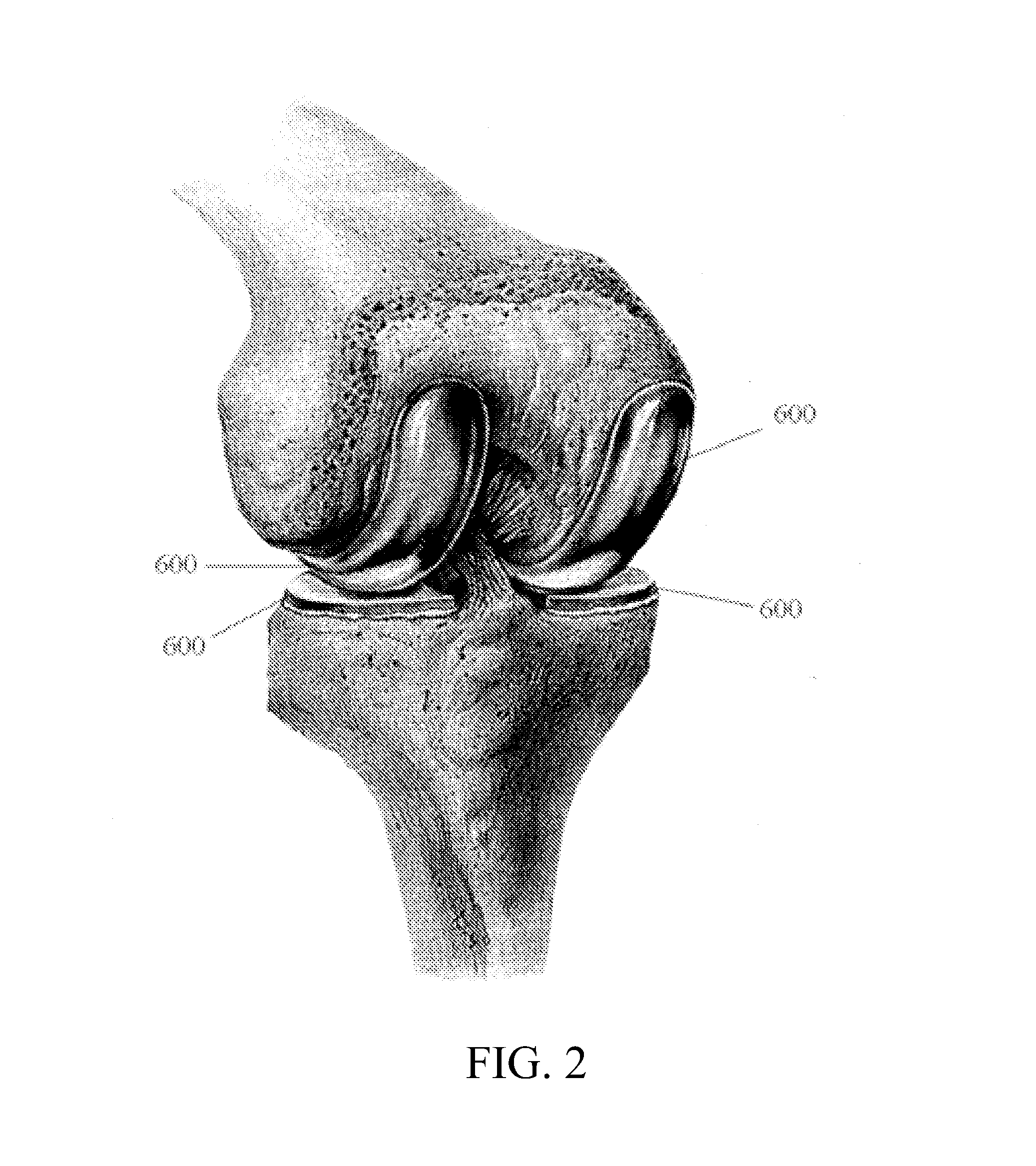Prosthetic device and system and method for implanting prosthetic device
a prosthetic device and prosthetic technology, applied in the field of orthopaedic joint replacement, can solve the problems of inconvenient operation, and inability to achieve fit, and conventional tka systems lack the flexibility to enable surgeons
- Summary
- Abstract
- Description
- Claims
- Application Information
AI Technical Summary
Problems solved by technology
Method used
Image
Examples
Embodiment Construction
[0047] Presently preferred embodiments of the invention are illustrated in the drawings. An effort has been made to use the same or like reference numbers throughout the drawings to refer to the same or like parts.
[0048]FIG. 4 is a diagram of a knee joint that includes a distal end of a femur 230, a proximal end of a tibia 240, a fibula 260, and a patella 250. The patella 250 moves relative to the femur 230 and the tibia 240 when the knee joint articulates. The femur 230 is joined to the tibia 240 by a medial collateral ligament (MCL) 272, a posterior cruciate ligament (PCL) 278, and an anterior cruciate ligament (ACL) 276. The femur 230 is joined to the fibula 260 by a lateral collateral ligament (LCL) 274.
[0049] The distal end of the femur 230 is conceptually divided into a lateral (i.e., outside) condyle region A, a central (or patellofemoral) region C (which contains a patellar groove 232 having an inverted U-shape), and a medial condyle (i.e., inside) region E. Similarly, the...
PUM
 Login to View More
Login to View More Abstract
Description
Claims
Application Information
 Login to View More
Login to View More - R&D
- Intellectual Property
- Life Sciences
- Materials
- Tech Scout
- Unparalleled Data Quality
- Higher Quality Content
- 60% Fewer Hallucinations
Browse by: Latest US Patents, China's latest patents, Technical Efficacy Thesaurus, Application Domain, Technology Topic, Popular Technical Reports.
© 2025 PatSnap. All rights reserved.Legal|Privacy policy|Modern Slavery Act Transparency Statement|Sitemap|About US| Contact US: help@patsnap.com



